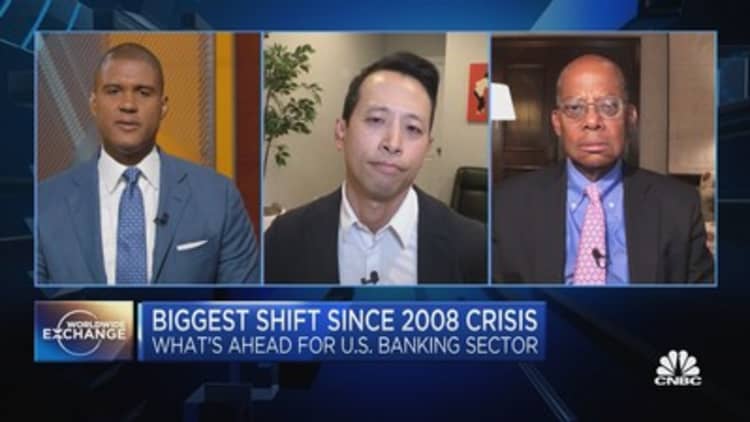The whirlwind weekend in late April that saw the country’s biggest bank take over its most troubled regional lender marked the end of one wave of problems — and the start of another.
After emerging with the winning bid for First Republic, a lender to rich coastal families that had $229 billion in assets, JPMorgan Chase CEO Jamie Dimon delivered the soothing words craved by investors after weeks of stomach-churning volatility: “This part of the crisis is over.”
But even as the dust settles from a string of government seizures of failed midsized banks, the forces that sparked the regional banking crisis in March are still at play.
Rising interest rates will deepen losses on securities held by banks and motivate savers to pull cash from accounts, squeezing the main way these companies make money. Losses on commercial real estate and other loans have just begun to register for banks, further shrinking their bottom lines. Regulators will turn their sights on midsized institutions after the collapse of Silicon Valley Bank exposed supervisory lapses.
What is coming will likely be the most significant shift in the American banking landscape since the 2008 financial crisis. Many of the country’s 4,672 lenders will be forced into the arms of stronger banks over the next few years, either by market forces or regulators, according to a dozen executives, advisors and investment bankers who spoke with CNBC.
“You’re going to have a massive wave of M&A among smaller banks because they need to get bigger,” said the co-president of a top six U.S. bank who declined to be identified speaking candidly about industry consolidation. “We’re the only country in the world that has this many banks.”
back to the turmoil of 2008, caused by irresponsible lending that fueled a housing bubble whose collapse nearly toppled the global economy.
The aftermath of that earlier crisis brought scrutiny on the world’s biggest banks, which needed bailouts to avert disaster. As a result, it was ultimately institutions with $250 billion or more in assets that saw the most changes, including annual stress tests and stiffer rules governing how much loss-absorbing capital they had to keep on their balance sheets.
Non-giant banks, meanwhile, were viewed as safer and skirted by with less federal oversight. In the years after 2008, regional and small banks often traded for a premium to their bigger peers, and banks that showed steady growth by catering to wealthy homeowners or startup investors, like First Republic and SVB, were rewarded with rising stock prices. But while they were less complex than the giant banks, they were not necessarily less risky.
The sudden collapse of SVB in March showed how quickly a bank could unravel, dispelling one of the core assumptions of the industry: the so-called stickiness of deposits. Low interest rates and bond-purchasing programs that defined the post-2008 years flooded banks with a cheap source of funding and lulled depositors into leaving cash parked at accounts that paid negligible rates.
“For at least 15 years, banks have been awash in deposits and with low rates, it cost them nothing,” said Brian Graham, a banking veteran and co-founder of advisory firm Klaros Group. “That’s clearly changed.”
headline news again this year, depositors have moved funds in search of higher yields or greater perceived safety. Now it’s the too-big-to-fail banks, with their implicit government backstop, that are seen as the safest places to park money. Big bank stocks have outperformed regionals. JPMorgan shares are up 7.6% this year, while the KBW Regional Banking Index is down more than 20%.
That illustrates one of the lessons of March’s tumult. Online tools have made moving money easier, and social media platforms have led to coordinated fears over lenders. Deposits that in the past were considered “sticky,” or unlikely to move, have suddenly become slippery. The industry’s funding is more expensive as a result, especially for smaller banks with a higher percentage of uninsured deposits. But even the megabanks have been forced to pay higher rates to retain deposits.

